
Collection
Special Issue: The fall armyworm: recent advances in biology and management
- Submission status
- Closed
The fall armyworm, Spodoptera frugiperda, is a polyphagous insect; the larvae feed on hundreds of plants including major crops. It is native to tropical and subtropical Americas, but recently, this pest invaded many countries in Africa, Asia, and Oceania destroying staple food crops and threatening food security in Africa and other parts of the world. Chemical insecticides and Bacillus thuringiensis (Bt) toxin expressing crop plants are being used to control this pest. Strong selection pressure caused by the extensive use of insecticides has already contributed to the evolution of insecticide resistance to numerous insecticidal active ingredients with several modes of action. Polyphagous feeding habit, ability to fly long distance and insecticide resistance have been hypothesized as the main factors contributing its invasion of many countries. Although genomes and various tissue transcriptomes have been assembled, there is not much information on function of the identified genes. As in other lepidopteran insects, RNA interferences does not work well in this insect. The recent adoption of CRISPR/Cas9 genome editing, and insect transgenic methods has enabled the development of functional genomics studies. Availability of genome and transcriptome sequences, genome editing, and transgenic methods and its economic importance led to explosion of research on this insect in many countries around the world. Novel chemical, biological and other methods are being developed to manage this invasive pest. Journal of Pest Science, a leading journal in Entomology, is inviting original research and review artcles arising from research on the fall armyworm for a special issue. We invite manuscripts on the biology, ethology, and ecology of this pest. Manuscripts describing novel pest management methods including new insecticides, biological control agents and new control methods, such as RNAi, are welcome. Reports on mechanisms of invasive behavior of this pest as well as insecticide resistance will be also considered.
Articles (27 in this collection)
-

-
Feeding experience on hairy vetch induces a loss of host-specific adaptation to maize and changes in the gut microbiota communities of the fall armyworm
Authors (first, second and last of 6)
- Lin Ma
- Dao-Tong Wang
- Xing-Fu Jiang
- Content type: Original Paper
- Published: 18 August 2023
- Pages: 777 - 792

-
Transgenerational effects of thermal stress on reproductive physiology of fall armyworm, Spodoptera frugiperda
Authors (first, second and last of 6)
- Ramankutty Reshma
- Doddachowdappa Sagar
- Vignesh Muthusamy
- Content type: Original Paper
- Published: 10 July 2023
- Pages: 1465 - 1481
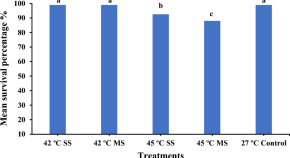
-
The natural control agents of the fall armyworm, Spodoptera frugiperda in Togo: moderating insecticide applications for natural control of the pest?
Authors (first, second and last of 6)
- Djima Koffi
- Komi Agboka
- Robert L. Meagher
- Content type: Original Paper
- Published: 06 July 2023
- Pages: 1405 - 1416
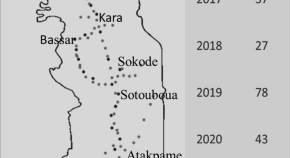
-
Current status of the biological control of the fall armyworm Spodoptera frugiperda by egg parasitoids
Authors (first, second and last of 8)
- Tian-Hao Li
- Adeney de Freitas Bueno
- Lian-Sheng Zang
- Content type: Review
- Published: 18 June 2023
- Pages: 1345 - 1363
-
Potential utilization of the brewery’s hop wastes as an insecticidal synergist and repellent against Spodoptera frugiperda
Authors
- Junho Yoon
- Jun-Hyung Tak
- Content type: Original Paper
- Published: 06 June 2023
- Pages: 1441 - 1454

-
Expression and functional analysis of ace1 and ace2 reveal their differential roles in larval growth and insecticide sensitivity in Spodoptera frugiperda (J. E. Smith, 1797)
Authors (first, second and last of 10)
- Jie Gao
- Li-Feng Gong
- Shao-Hua Gu
- Content type: Original Paper
- Published: 27 May 2023
- Pages: 1651 - 1666

-
Chlorantraniliprole emulsified with botanical oils effectively controls invasive pest Spodoptera frugiperda larvae in corn plant
Authors (first, second and last of 10)
- Zixia Song
- Chao Li
- Zhixiang Zhang
- Content type: Original Paper
- Published: 08 May 2023
- Pages: 1429 - 1440
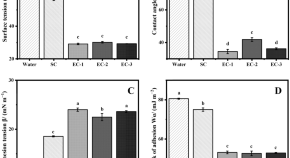
-
Development of a recombinant baculovirus with dual effects to mediate V-ATPase interference by RNA in the fall armyworm Spodoptera frugiperda
Authors (first, second and last of 6)
- Shanshan Bai
- Duo Jin
- Zhijun Qi
- Content type: Original Paper
- Published: 24 April 2023
- Pages: 1667 - 1681

-
Correction: Variation in egg mass scale thickness of three Spodoptera species and its effects on egg parasitoid performance
Authors (first, second and last of 6)
- Tian-Hao Li
- Yue Ma
- Lian-Sheng Zang
- Content type: Correction
- Published: 13 April 2023
- Pages: 1403 - 1403
-
Fitness costs associated with spinetoram resistance in Spodoptera frugiperda is driven by host plants
Authors (first, second and last of 5)
- Rubens H. Kanno
- Aline S. Guidolin
- Celso Omoto
- Content type: Original Paper
- Published: 24 March 2023
- Pages: 1625 - 1635

-
Variation in egg mass scale thickness of three Spodoptera species and its effects on egg parasitoid performance
Authors (first, second and last of 6)
- Tian-Hao Li
- Yue Ma
- Lian-Sheng Zang
- Content type: Original Paper
- Published: 28 February 2023
- Pages: 1393 - 1402

-
Use of food attractants to monitor and forecast Spodoptera frugiperda (J. E. Smith) seasonal abundance in southern China
Authors (first, second and last of 10)
- Wei He
- Liying Wang
- Kongming Wu
- Content type: Original Paper
- Published: 23 February 2023
- Pages: 1509 - 1521

-
Comparative effects of biopesticides on fall armyworm management and larval parasitism rates in northern Ghana
Authors (first, second and last of 7)
- Lakpo Koku Agboyi
- Jerry Asalma Nboyine
- Dirk Babendreier
- Content type: Original Paper
- Open Access
- Published: 14 February 2023
- Pages: 1417 - 1428

-
Impact of host plants on biological characteristics and Vg/VgR expression of Spodoptera frugiperda
Authors (first, second and last of 6)
- Shi-Peng Han
- Ya-Yuan Zhou
- Yun-Zhuan He
- Content type: Original Paper
- Published: 17 November 2022
- Pages: 1569 - 1577

-
Providing aged parasitoids can enhance the mass-rearing efficiency of Telenomus remus, a dominant egg parasitoid of Spodoptera frugiperda, on Spodoptera litura eggs
Authors (first, second and last of 5)
- Wanbin Chen
- Mengqing Wang
- Lisheng Zhang
- Content type: Original Paper
- Published: 09 November 2022
- Pages: 1379 - 1392

-
Cannibalism and intraguild predation involved in the intra- and inter-specific interactions of the invasive fall armyworm, Spodoptera frugiperda, and lepidopteran maize stemborers
Authors (first, second and last of 8)
- Bonoukpoè Mawuko Sokame
- Boaz Musyoka
- Paul-André Calatayud
- Content type: Original Paper
- Open Access
- Published: 16 October 2022
- Pages: 1455 - 1464

-
Genetic architecture and insecticide resistance in Chinese populations of Spodoptera frugiperda
Authors (first, second and last of 8)
- Huan-Huan Wang
- Rui Zhao
- Shao-Hua Gu
- Content type: Original Paper
- Published: 13 October 2022
- Pages: 1595 - 1610
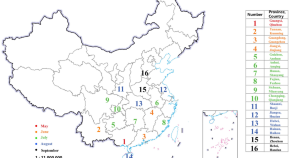
-
Push–pull plants in wheat intercropping system to manage Spodoptera frugiperda
Authors (first, second and last of 7)
- Huan Liu
- Yumeng Cheng
- Julian Chen
- Content type: Original Paper
- Published: 03 August 2022
- Pages: 1579 - 1593

-
Development of multiple transgenic CRISPR/Cas9 methods for genome editing in the fall armyworm, Spodoptera frugiperda
Authors
- Xien Chen
- Subba Reddy Palli
- Content type: Original Paper
- Published: 30 July 2022
- Pages: 1637 - 1650

-
Modeling fall armyworm resistance in Bt-maize areas during crop and off-seasons
Authors (first, second and last of 7)
- Maysa P. Tomé
- Igor D. Weber
- Wesley A. C. Godoy
- Content type: Original Paper
- Published: 14 July 2022
- Pages: 1539 - 1550

-
Sorghum and maize flavonoids are detrimental to growth and survival of fall armyworm Spodoptera frugiperda
Authors (first, second and last of 7)
- Debamalya Chatterjee
- Tyler Lesko
- Surinder Chopra
- Content type: Original Paper
- Published: 07 July 2022
- Pages: 1551 - 1567

-
Cold storage effects on biological parameters of Telenomus remus, a promising egg parasitoid of Spodoptera frugiperda, reared on Spodoptera litura eggs
Authors (first, second and last of 8)
- Wanbin Chen
- Yuyan Li
- Lisheng Zhang
- Content type: Original Paper
- Published: 08 June 2022
- Pages: 1365 - 1378
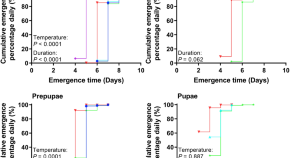
-
Assessing the risk of establishment and transient populations of Spodoptera frugiperda in Europe
Authors (first, second and last of 5)
- Gianni Gilioli
- Giorgio Sperandio
- Paola Gervasio
- Content type: Original Paper
- Open Access
- Published: 03 June 2022
- Pages: 1523 - 1537
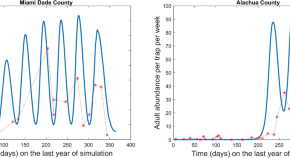
-
The effect of invasive fall armyworm abundance on native species depends on relative trophic level
Authors (first, second and last of 5)
- Pengxiang Wu
- Kai Shi
- Runzhi Zhang
- Content type: Original Paper
- Published: 26 April 2022
- Pages: 1497 - 1507

-
What’s shaking for caterpillars? Leaf-borne vibratory stimuli and behavioral responses in the fall armyworm, Spodoptera frugiperda
Authors (first, second and last of 4)
- Leonardo M. Turchen
- Lírio Cosme Jr.
- Raul Narciso C. Guedes
- Content type: Original Paper
- Published: 11 April 2022
- Pages: 1483 - 1496

-
Midgut-specific expression of CYP321A8 P450 gene increases deltamethrin tolerance in the fall armyworm Spodoptera frugiperda
Authors
- Xien Chen
- Subba Reddy Palli
- Content type: Original Paper
- Published: 16 February 2022
- Pages: 1611 - 1623


